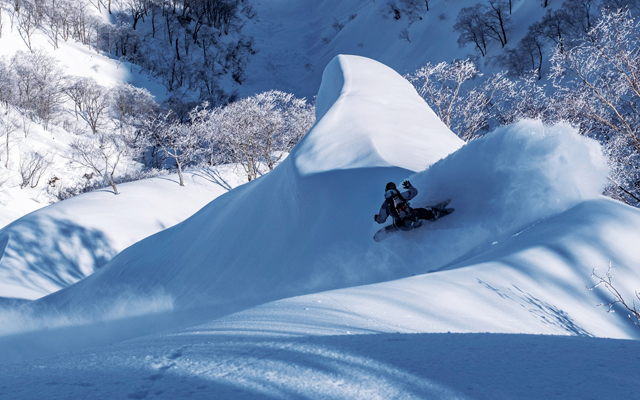Japan is levelling up its luxury travel offerings, especially in lesser-known destinations, to attract the affluent and well-travelled
Japan is intensifying its courtship of luxury travellers by way of developing and launching a wide range of high-end experiences nationwide.
The high-end traveller market is important to the country as it makes its inbound tourism recovery. Although only about one per cent of international arrivals to Japan in 2019 spent one million yen (US$7,000) during their stay, their combined spend represented 11.5 per cent of total inbound tourism expenditure, according to the Ministry of Land, Infrastructure, Transport and Tourism.

Most of those high-spending visitors, who the Japan National Tourism Organization (JNTO) define as “high-value travellers”, hailed from the US, the UK, France, Germany, Australia and China.
As part of the Tourism Nation Promotion Basic Plan, in place until March 2026, JNTO and the Japan Tourism Agency (JTA) have “positioned luxury tourism as one of the most prioritised initiatives”, a JNTO spokesperson told TTG Asia.
Among the plan’s main goals, which were set in April 2023, are achieving five trillion yen in annual inbound tourism spend, up from the 4.8 trillion yen recorded in 2019. This target has already been exceeded, with total consumption by international travellers in calendar year 2023 totalling 5.3 trillion yen.
However, other goals remain, such as increasing the number of luxury travellers who visit the country’s lesser-known destinations and the average time spent in local areas to two nights, up from 1.4 nights in 2019.
“We recognise that it is essential to increase visitors to regions other than Tokyo, Osaka and Kyoto, where 70 per cent of luxury traveller spend was concentrated in 2019,” continued the JNTO spokesperson.
This need has prompted the JTA to select 11 model tourist destinations around the country including Eastern Hokkaido – known for its lakes, marshes and volcanic landscapes – and the Seto Inland Sea, which is home to some 700 islands.
“Visitors can experience authentic and unique culture based on nature in each region, which is distinguished from the luxury travel offerings (available in Japan) thus far,” said the spokesperson.
New offerings in the region focus on exclusivity, communities, and the environment. Examples include seeing ama (sea women) divers, who have free-dived for millennia, in Mie Prefecture; training with yamabushi mountain ascetics in Yamagata Prefecture; and learning about reintroduced wild storks in Ramsar-designated wetlands in Hyogo Prefecture.
In the corporate sector, too, the race is on to cater to inbound luxury travellers, both now and as their numbers increase.
Increasingly, in snow sports resorts, Lindsay Colbert, managing director of Japan Ski Experience, told TTG Asia that “on-mountain activities are complemented by luxury offerings such as spa facilities, fully equipped gyms, yoga classes and pampering packages”.
“Emerging accommodation developments, both in Japan’s most popular resorts and up-and-coming destinations, are heavily focused on catering to this demand,” she added.
Expanding to offer more experiences is also top of mind for Max Mackee, founder of Kammui Inc. – the premium nature and adventure travel experience provider recently completed its first successful winter season (2023-2024) offering Kammui Adventures, a series of curated multi-day packages centred around skiing and snowboarding in Hokkaido’s backcountry and luxury experiences like Japanese whiskey tastings.
With more offerings planned, Kammui Inc.’s mission is “developing the premium adventure tourism market in Japan”, he shared.
Successful uptake of these experiences, though, depends on the availability of exclusive transport to ensure high-end visitors can travel quickly and easily around the country, even during short trips. However, there are legal and logistical challenges to offering luxury transport options on demand.
Bespoke travel design company Infinity Mugen, a member of the Regional Revitalization and Inbound Tourism Council, has developed 50 luxury experiences across Japan, from Hokkaido to Okinawa, targeting high-end travellers mainly from Europe and the US. Each experience is designed to be tailor-made, including through the use of chartered aircraft.
However, Japan’s Travel Industry Law stated that a tour cannot be offered until all necessary arrangements including travel and accommodation are made. Furthermore, an application for a business jet slot at Haneda Airport, for example, must be submitted three days in advance. There are also no separate airports in Japan for small aircraft, unlike in Europe and the US, resulting in a limited number of slots for take-off and landing.
Kenji Inaoka, chairman of Infinity Mugen, said he is therefore able to arrange charter flights, hotels and experiences only after receiving a booking.
Still, he believes that Japan’s nascent luxury travel industry has the potential to not only exceed the demands of high-end visitors but also develop rural areas.
“There are many wealthy people in Japan but they don’t have a culture of spending large sums on leisure, so there is a lack of travel content for wealthy visitors; the regions can offer unique experiences for them through the utilisation of technology and human resources,” Inaoka told TTG Asia.
“Introducing regional culture and hospitality to luxury visitors is the key to revitalising Japan’s regions.”











